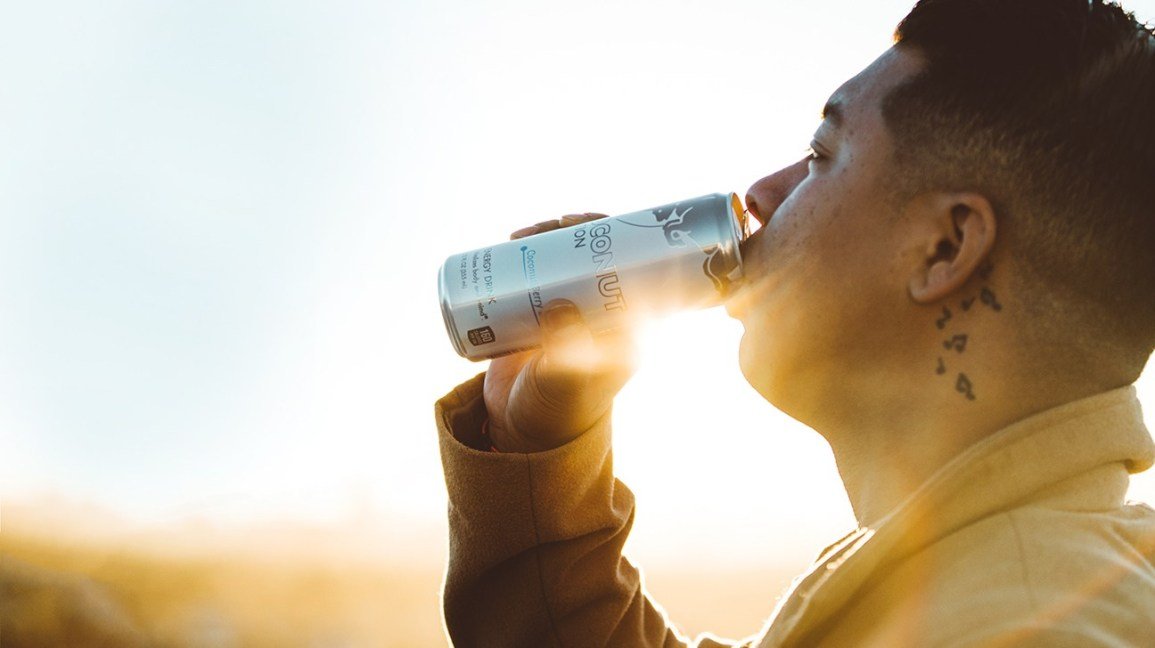Inside BENEO’s new pulse plant: pioneering sustainable protein from faba beans
Excessive consumption of sports drink can cause gastrointestinal upset.
An energy drink is a type of drink that contains sugar and stimulant compounds, that provides mental and physical stimulation. They are widely promoted as products that increase energy and enhance mental alertness and physical performance. Consumption of energy drinks has been increasing dramatically in the last two decades, particularly amongst adolescents and young adults. Energy drinks are aggressively marketed with the claim that these products give an energy boost to improve physical and cognitive performance. They are designed to give an “energy boost” to the drinker by a combination of stimulants and energy boosters.
There are two kinds of energy drink products. One is sold in containers similar in size to those of ordinary soft drinks. The other kind, called “energy shots,” is sold in small containers holding of concentrated liquid. Caffeine is a major ingredient in both types of energy drink products. Some energy drinks also contain other ingredients such as guarana, sugars, taurine, ginseng, B vitamins, glucuronolactone, yohimbe, carnitine. Most energy drinks contain between 120 to 200 mg of caffeine, and some contain as much as 300 or even 500 mg.
Advertisements for energy drinks usually promise improved performance, and some drinkers mistakenly think that “more is better. People who drink energy drinks may be at a higher risk of caffeine toxicity compared with those who drink other caffeinated beverages such as coffee or soda. Signs of caffeine overdose include nervousness, anxiety, restlessness, insomnia, nausea and vomiting. More serious symptoms of acute caffeine toxicity include tremors, tachycardia or rapid heart rate, psychomotor agitation, high blood pressure, heart palpitations, dizziness, numbness and fainting.
Caffeine in the drinks blocks the effects of adenosine, a brain chemical that helps you sleep (which is why too much can lead to insomnia). But it also fires off neurons in your brain to keep you alert, causing your pituitary gland to initiate the “fight or flight” response. That’s your body’s natural reaction to prepare for a threat. After the “fight or flight” response is activated, your pituitary gland releases adrenaline, which sends a signal to your liver to pump more glucose into the bloodstream. Adrenaline makes your heart beat faster and your eyes dilate, effects that can last longer than you might like. With more glucose in your bloodstream and your body in fight-or-flight mode, the increased dopamine levels trick your brain in to believing that you have more energy than you really do.
Drinking energy drinks in combination with alcohol has become increasingly popular, particularly among youngsters. It is a common place like clubs or pubs especially among young people to mix energy drinks with alcohol. A number of potential health risks, mainly associated with caffeine content of drinks, as well as risks of combining them with alcohol. Due to high content of caffeine in energy drinks, it leads in reduction in insulin sensitivity that induces prediabetes or diabetes. Energy drinks usually contain large amounts of sugar. The sugar content is mainly in the form of sucrose, glucose or high fructose corn syrup. Therefore, high energy drink intake may increase the risk of obesity and type 2 diabetes. The caffeine in energy drinks has been shown to enhance diuresis. Therefore, energy drinks should be avoided during prolonged exercise in a hot environment because of the potential for dehydration.
People take sports drinks to replace water and electrolytes lost through sweating after activity. Electrolytes are minerals, such as potassium, calcium, sodium, and magnesium, that keep the body’s balance of fluids at the proper level. You lose water and electrolytes when you sweat. Sports drinks often contain carbohydrate in the form of sugar, as well as electrolytes and sometimes protein, vitamins, or caffeine. They come in different flavours.
For optimal performance, sportsperson or athletes should be hydrated and adequately fuelled during exercise. Sports drinks are specifically designed to provide the right balance of carbohydrate, electrolytes and fluid to adequately fuel exercise and provide fluid for hydration.
Sports drinks are full of vitamins and minerals, but most are also full of sugar. Some of the more popular brands have as much as eight teaspoons of sugar in one single (200-250 ml) bottle. Although this is almost necessary to make them taste good, but it has a detrimental effect on your health. Too much sugar over a long period can lead to problems such as diabetes, high blood pressure and weight gain. When used in moderation, the sugar content is not a big issue, but most sports drink users will chug a bottle or two of their favorite flavor in a matter of minutes.
Excessive consumption of sports drink can cause gastrointestinal upset. It is recommended that people should drink small amounts frequently rather than a lot at once. Sports drinks contains sugars but have little nutritional value. They add calories. So when people are not exercising long or hard, sports drinks could lead to weight gain. The sugars in these drinks can also lead to dental problems.
It is recommended that children and teenagers not to use energy drinks. The best way for children and teenagers to improve energy is through a balanced diet. Getting enough sleep also can help keep energy levels up. Some people use sports drinks as a way to gain energy throughout their day instead of its intended use replenishing vitamins and fluids. As a result, sports drinks become a substitute for a healthy lifestyle of getting plenty of rest, eating a well-balanced diet, exercising and minimizing stress. If you lead a healthy lifestyle, you typically do not need products to give you enough energy to make it through the day. Sports drinks give people an excuse to live a less than healthy lifestyle.
Dr Pradeep Gadge, a leading Diabetologist, Gadge Diabetes Centre

